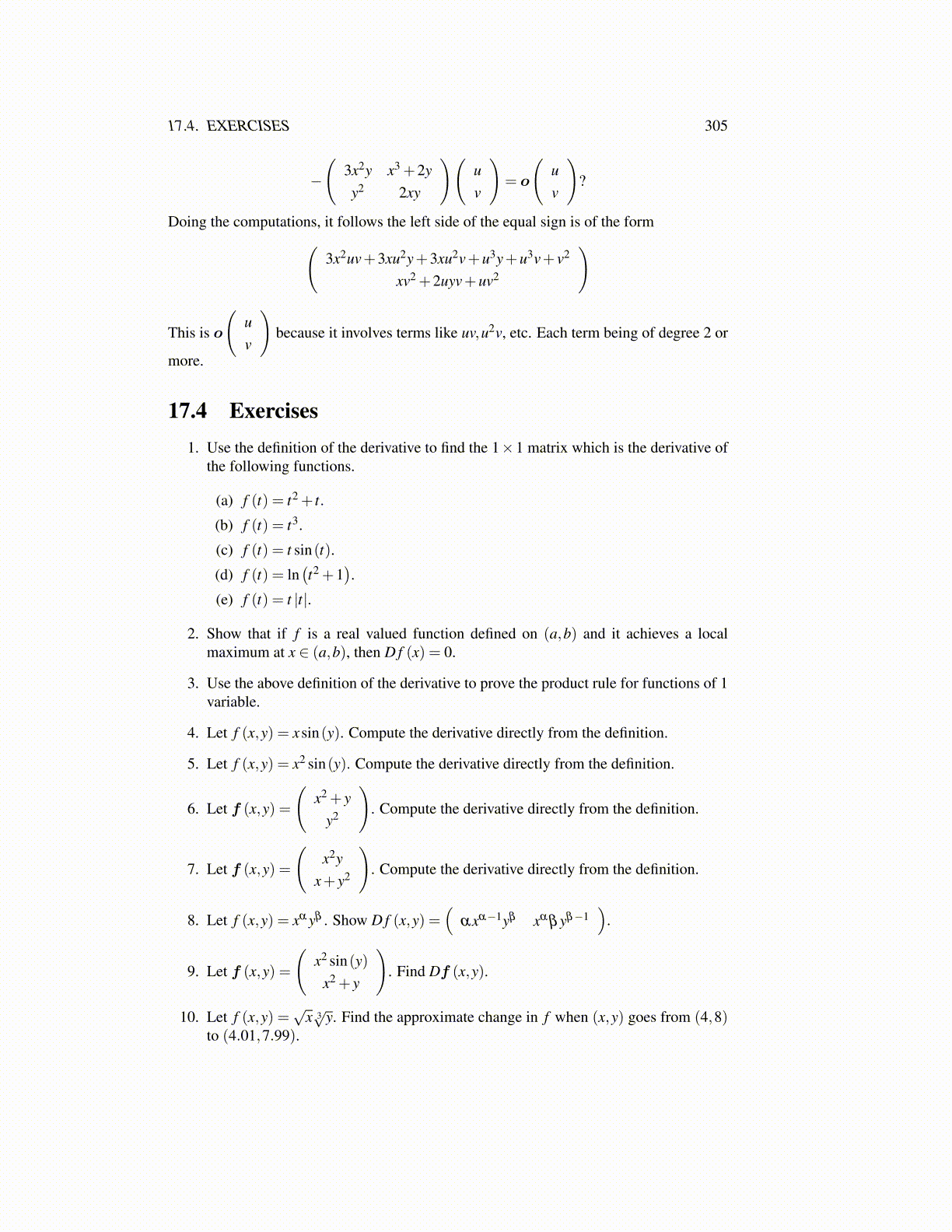
17.4. EXERCISES 305
−
(3x2y x3 +2yy2 2xy
)(uv
)= o
(uv
)?
Doing the computations, it follows the left side of the equal sign is of the form(3x2uv+3xu2y+3xu2v+u3y+u3v+ v2
xv2 +2uyv+uv2
)
This is o
(uv
)because it involves terms like uv,u2v, etc. Each term being of degree 2 or
more.
17.4 Exercises1. Use the definition of the derivative to find the 1×1 matrix which is the derivative of
the following functions.
(a) f (t) = t2 + t.
(b) f (t) = t3.
(c) f (t) = t sin(t).
(d) f (t) = ln(t2 +1
).
(e) f (t) = t |t|.
2. Show that if f is a real valued function defined on (a,b) and it achieves a localmaximum at x ∈ (a,b), then D f (x) = 0.
3. Use the above definition of the derivative to prove the product rule for functions of 1variable.
4. Let f (x,y) = xsin(y). Compute the derivative directly from the definition.
5. Let f (x,y) = x2 sin(y). Compute the derivative directly from the definition.
6. Let f (x,y) =
(x2 + y
y2
). Compute the derivative directly from the definition.
7. Let f (x,y) =
(x2y
x+ y2
). Compute the derivative directly from the definition.
8. Let f (x,y) = xα yβ . Show D f (x,y) =(
αxα−1yβ xα βyβ−1)
.
9. Let f (x,y) =
(x2 sin(y)
x2 + y
). Find Df (x,y).
10. Let f (x,y) =√
x 3√
y. Find the approximate change in f when (x,y) goes from (4,8)to (4.01,7.99).